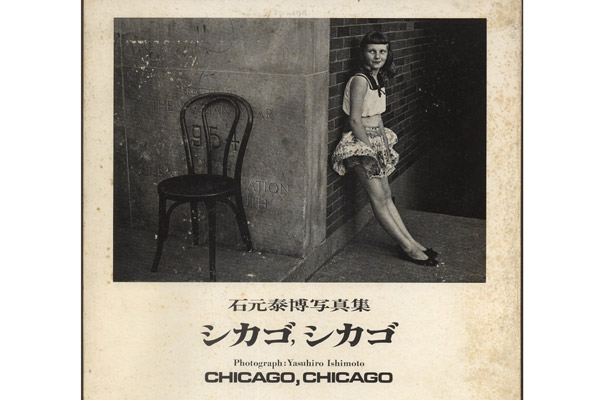
Yasuhiro Ishimoto, a Japanese-American photographer who studied at Northwestern and at the Chicago Institute of Design under Laszlo Moholy-Nagy, passed away last month at the age of 90. I only heard about it a couple days ago, as his death got little coverage outside of photography and art blogs, but with interest in Chicago street photography going strong, it still seems like a good time to appreciate his work.
Ishimoto was born in San Francisco, moved to Japan at the age of three, and after high school, in the midst of the Second Sino-Japanese War, his parents sent him back to California in 1939. With tensions between the U.S. and Japan peaking, he was interned in Colorado. World War II exclusion zones kept him from the coasts, so he settled in Chicago and, movingly, decided to study architecture with the knowledge that his parents' homeland would be in need of architects after the war. From there Ishimoto was drawn into the city's excellent mid-century photography scene, in which he'd study with Moholy-Nagy and Harry Callahan:
Advocating a new photography of “seeing while moving,” Moholy-Nagy’s curriculum emphasized the formal aspects of the pictorial space and had a profound influence on Ishimoto’s distinctive east-west aesthetic that reinterpreted traditional Japanese culture through the lens of modernism.
[snip]
In his role as a photographic bilinguist, Ishimoto was also largely responsible for introducing a formal modernism imbued with a distinctly western sense of individuality to a new generation of Japanese photographers through his 1954 solo show in Tokyo, and his widely published architectural images of Katsura. This exposure contributed to the emergence of the more expressive “image school” generation, whose members included Ikko Narahara, Shomei Tomatsu and Eikoh Hosoe.
Unsurprisingly, Ishimoto made his name with architectural photography, but he became an adept street photographer as well:
Working with assurance and with a spontaneity that was very different to the earlier work he made a portrait of the city as it was at the end of the nineteen-fifties. His quizzical, sometimes acerbic gaze is what gives the book its force and Chicago Chicago, published in 1969, cemented his reputation. He returned to Japan once more in 1961 and became a naturalized citizen in 1969.
In 1999, Ishimoto was honored with a retrospective at the Art Institute of Chicago; for the Reader, Fred Camper wrote a lengthy profile of Ishimoto and his colleague Marvin Newman that's moving in its treatment of Ishimoto's photographic education, and that doubles as a brief history of Chicago photography in the mid-20th century:
With the help of a recommendation from well-known photographer Harry Shigeta, whom he'd met through a friend, Ishimoto joined the Fort Dearborn Camera Club, a group still in existence that Shigeta cofounded in 1924. Soon Ishimoto entered a photo he'd taken of a large crowd of camp inmates in the club's monthly contest. The judge criticized it, saying it wasn't a "good picture." Ishimoto now thinks the criticism was probably accurate, since he hadn't even got out of the car to make a better composition. But back then he was shocked by the judge's harsh words. He went to Brentano's to search for books that might help him prove himself to the judge, and the first one he chose was Gyorgy Kepes's Language of Vision. From then on, he says, "almost every month I was getting the top prize." The second book he bought was Laszlo Moholy-Nagy's Vision in Motion, and soon viewers of his photographs were asking him if he'd gone to the Institute of Design, which Moholy-Nagy had founded in 1937. That inspired Ishimoto to show his portfolio to Harry Callahan, the institute's best-known photography instructor.
At the time when Ishimoto joined, most camera-club members still followed the decades-old tradition of pictorialism, a romantic–some would say manneristic, even degenerate–style in which photographers imitated the look of various types of painting. Despite the books he'd read, Ishimoto was still in the grip of pictorialism. Years later Callahan remembered seeing Ishimoto's portfolio for the first time and wondering, "What am I going to do with this guy?"
Online, the Museum of Contemporary Photography has several of Ishimoto's works, including three shots from Chicago, Chicago; CNN's photo blog has a brief gallery, with several shots from the city; the Stephen Daiter Gallery has an extensive collection, including some wonderful Halloween portraits.



